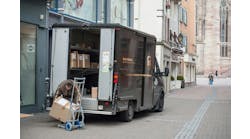City Brewing Company started small, running one line of beer in the former Pabst Brewery. It could easily manage the one or two SKUs in the nonautomated facility. But the revenue from the low volume wasn't enough to pay the bills. Running a co-pack operation that bottled other company's brands offered one way to increase volume. The company started by bottling malted drink brands, then nonalcoholic beverages.
"We discovered a really nice niche with the energy drinks, teas and specialized carbonated soft drinks that has fueled a nice growth for us," says Kenneth W. Yartz, chief operating officer.
As product lines were added, the company's SKUs grew exponentially. They grew to the point where it was changing product on a bottling line with every shift. Now, its four lines each change output 30 or 40 times a month creating a monumental number of SKUs, which could no longer be tracked with a manual system.
"Our efficiencies were terrible. Our control was not good. With alcoholic products, particularly from a tax standpoint, you can't loose things after you make them," Yartz explains. Every day, City Brewing ships 150 truckloads from its DC. Additionally, it has daily rail shipments. "There is no way we could have shipped this volume with a manual system," Yartz says. This year, it is on schedule to produce 30 to 35 million cases.
At the end of 2005, City Brewing radically changed its business process to enhance its growth and meet customer demand. It consolidated three warehouses into an existing 350,000 sq.-ft. facility and installed a bar coding system and warehouse management software (WMS) from HighJump Inc. (Eden Prairie, Minn., www.highjump. com). HighJump's WMS incorporates service-oriented architecture that makes it easier to communicate with other hardware and software systems in the facility. (See WMS models business practices, on page 49.)
"We ended up with a very nice warehousing and logistics model. We can manage tight controls over customer inventory. It gives us a good level of control over revenue collection. Using WMS, our customer complaints are almost zero for inventory rotation and management," Yartz says.
Its WMS tracks each SKU from the manufacturing plant to the DC. Since beer has the shortest shelf life followed by flavored malt beverages, the software manages the first-in, first-out logic for both products. It also closely monitors the movement of the plant's alcoholic beverages to maintain compliance with state and federal laws.
The WMS has given City Brewing the ability to offer a measurable, tangible service to its customers. "We do not have complaints about the billing because the reporting is so good from the HighJump system and the accuracy of the data is so good that we are creditable," Yartz reports. What's more, he adds, "We are able to charge for services that frankly we were not able to charge for prior [to using WMS]."
Conservative Approach
Because it produces highly regulated alcoholic products, City Brewing proceeded with care and caution when it chose a WMS. "Startup and implementation of HighJump was not easy," Yartz reports. "But when we came out of the other side, we ended up with a great system."
City Brewing ran the old manual system and the new system in parallel when it was bringing the new system online. The installation was done in phases, based on natural breaks in the process flow. It only migrated to the next step after managers verified the current step and felt comfortable with it.
"There are so many risks with tax authorities on alcohol, you just can't make mistakes. Doing this proved we could do it, our data was accurate; it proved we could get the bugs out," Yartz explains.
Running the systems in parallel for four months proved to the company's 400 hourly employees that when the system went live, they knew how to run it. Actually, Yartz adds, employees were relieved when they finally switched completely because they had less work to do.
"It wasn't the cheapest [WMS]," Yartz recalls. However, "It is a robust system we use every day. I think we would have to pry it from our warehousemen if we told them we were going back to the old way."
Installation Advice
City Brewing has a complex process and the tax authorities to keep in mind, so it took a pragmatic approach to its WMS implementation. Yartz offers some of his insights on what they did to make sure the WMS installation was successful.
- Identify and plan business processes well in advance.
- Don't attempt to go live without a lot of functional checkout work and parallel testing.
- Involve employees. "If you take a good project management approach to a thing like this, and that starts in my mind with process design, you can execute," Yartz explains. "We did and we are quite happy with the tool."
Business is growing for City Brewing. It currently has 2.5 million cases of various beverges in its warehouse.
City Brewing Company uses a HighJump warehouse management system built on a service-oriented architecture to track the movement of product.
WMS Models Business PracticesWelcome to the next software evolution. The long awaited promise of smoother software integration is happening thanks to serviceoriented architecture (SOA). Most of today's warehouse management software (WMS), including High-Jump (Eden Prairie, Minn., www.highjumpsoftware.com) and Red Prairie (Milwaukee, www.redprairie.com), are built on SOA. The structure gives the software greater flexibility, ease of integration and long-term adaptability. Because it is easier to use and manipulate, warehouse managers can tailor their WMS systems to match and better manage their business processes. SOA technology, developed about 10 years ago, is a software structure. It is not a computer language. Its strength is its flexibility. Software is structured into interchangeable blocks, similar to Legos, which can be snapped together in many different configurations to match different warehouse processes. SOA also makes it easier for the WMS software to communicate with and manage other warehouse systems. It can use wireless and bar code technologies, including RFID to drive, and make more efficient, fulfillment, containerization, wave planning and slotting. SOA is the backbone of High-Jump's Warehouse Advantage software, and RedPrairie's DLx Warehouse software. |


